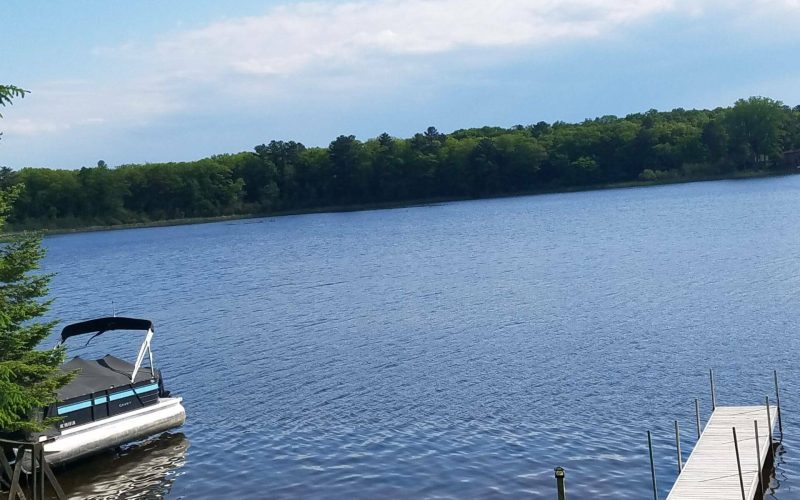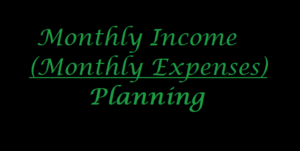I have read countless articles and books about how to build wealth and everyone has their own opinions on how to do this but they all agree on one thing, “have a written plan”. It doesn’t have to be elaborate or super complicated but it needs to be something you will look at frequently and stick to.
Let's Get Started!
If you are new to saving money and do not currently have a savings account now is a great time to start. Grab your notebook or a spread sheet and make a list of things you need to save for this year and larger ticket items.
CATEGORY
Emergency fund – 3 months expenses
Christmas/Gifts
Vacation
Home Improvement – New Carpet
GOAL
$9,000
$1,400
$2,500
$6,500
Set a Savings Goal Amount
How much do you want to allocate to each of the items on your list? Do some research on how much these items cost or how much you usually spend. Be sure to keep these numbers realistic.
If you set a savings goal too high such as Christmas then it might not seem achievable and you could lose focus and give up. If you set a savings goal too low then you might overspend and be disappointed that your savings account took a larger hit than you wanted or worse you used a credit card for the difference.
Order Your List
It is important to order your list from “most important” to “things that can wait”. In the example above the most important is an emergency fund and the least important is carpet.
My actual list is about 17 items. I break them up into categories:
- Emergency Fund
- 3-6 months expenses
- Yearly Items
- Property Taxes, Insurance (Life, Car, Home), Christmas, etc.
- Home Improvement
- New Deck, Kitchen Remodel, New Carpet, etc
- Vacations
- Kentucky Bourbon Tour, Yosemite, Napa Valley, etc
The reason I break them up into categories is because I am not saving for them all at the same time. I have my emergency fund fully funded, so that is done. I save a set dollar amount each month for the required yearly items.
If I have extra savings for the month then I will put the money towards an item in my saving list such as home improvement or vacation. Right now we are saving for a new deck and I am ignoring all the other items in my home improvement list. I save for one vacation at a time but I like to keep a running list of things we want to do in the future.
Set the Goal Dates
When do you need the money by? It is important to have a target date next to all of your items. If there is no date then there is no urgency to complete the goal or build your savings.
CATEGORY
Emergency fund – 3 months expenses
Christmas/Gifts
Vacation
Home Improvement – New Carpet
GOAL
$9,000
$1,400
$2,500
$6,500
DATE
08/01/2022
11/15/2022
06/23/2023
7/15/2023
I feel so accomplished when I achieve a savings goal amount. It is very exciting to hit a savings goal before it is planned, but even if it is achieved a little late it is still very satisfying to complete. The trick is to not give up. Maybe because of unforeseen circumstances you are behind on making your goal. Change the goal date to keep the goal realistic.
Keep Track of Your Actual Savings & Goal
How is your progress? In this example, when you look at the savings account actual you will see a actual balance of $9,900. For a lot of people it would be tempting to spend some of this money. The trick to not spending it is an itemized list of the savings account balance, psychologically, you understand the money is not actually available for spending.
CATEGORY
Emergency fund – 3 months expenses
Christmas/Gifts
Vacation
Home Improvement – New Carpet
ACTUAL
$9,000
$900
$0
$0
GOAL
$9,000
$1,400
$2,500
$6,500
DATE
08/01/2022
11/01/2022
06/01/2023
12/01/2024
How to Calculated Your Monthly Savings Goal
This is a critical step in the process. If you don’t do this step then you wont know if the goal dates you set are realistic or not. Let’s use the three examples above with a July 1st start date:
| Category | Amount Need | Months to Goal | Savings per Month |
| Goal Amount minus Amount Saved | Amount Needed divided by Months to Goal | ||
| Christmas | $1,400-$900 = $500 | 4 months | $500/4 = $125 |
| Vacation | $2500-$0 = $2,500 | 11 months | $2,500/11 = $228 |
| New Carpet | $6500-$0 = $6,500 | 29 months | $6,500/29 = $225 |
| Total Savings per Month | $125 + $228 + $225 = $578 per month |
In this example we would need to save $578 a month until November when we hit our goal of the Christmas fund. If this is not a number we can save per month then an adjustment to the date goal will be needed. We might need to wait on carpet for another year or find different ways to make extra money.
Why Do you Need an Emergency Fund?
Emergency funds are important because they help you manage your debt. If you have an emergency fund built up and your car breaks down then you can pay in cash. An emergency fund gives you options when things go wrong instead of forcing you into payments you don’t want.
How much should you have in an Emergency Fund?
The answer will vary depending on who you ask or what book you read. Everyone has a different opinion. I would say you should keep $1,000 and pay off your credit card running balance. Once you no longer have a credit card running balance then increase your emergency fund to 3~6 months.
If you for some reason want to keep a running balance on your credit card and don’t believe in debt reduction then it would be a good idea to jump right into saving a 3~6 month emergency fund.
Add up all of your expenses for the month and multiply them by 3 or 6 depending on the emergency fund you are building. This is the number you need for a 3 or 6 month emergency fund. I like to add an extra $3,000 to the number calculated above incase it is a job loss and I need to pay for health insurance as well as my other expenses.
How Often should you Re-Visit Your Savings List?
Honestly, I revisit my list every two weeks because I am adding money to my savings every two weeks. Andrew and I re-evaluate our list once or twice a year. We talk about the emergency fund and add up our expenses to make sure we still have a fully funded emergency fund.
We sometimes change the priority of our home improvement projects. We initially had the kitchen remodel before the new deck but the deck took priority when the railings started rotting.
You should revisit your savings list every time your priorities change. It is a good idea to make sure the goal amount is still realistic as well as the timeline you set for it.
When should you Adjust your Monthly Savings Goal
You should definitely revisit this number when your monthly income increases. Examples include raise at work, bonus, stimulus, unexpected money, etc. Any time you can avoid lifestyle creep you should. Saving extra money is a great way to keep your lifestyle in check.
Strangely this is something most of us do not think about. If you have a list and a monthly savings amount that is working for you then often times we don’t re-evaluate. This is a critical error.
What things can you do to Save More Money?
I’m probably not going to tell you anything you don’t already know. Cut back on your lifestyle, get a second job, sell stuff you don’t need, start a side hustle, do odd jobs for your neighbors, etc.
Time to Start!
I am excited for you to start or beef up your savings account! I know it is hard to stay disciplined when saving money but it is truly worth it when you have a large expense and know the money has already been set aside. If you start small you will be surprised how fast your savings will grow. Save at your speed and DON’T GIVE UP!





